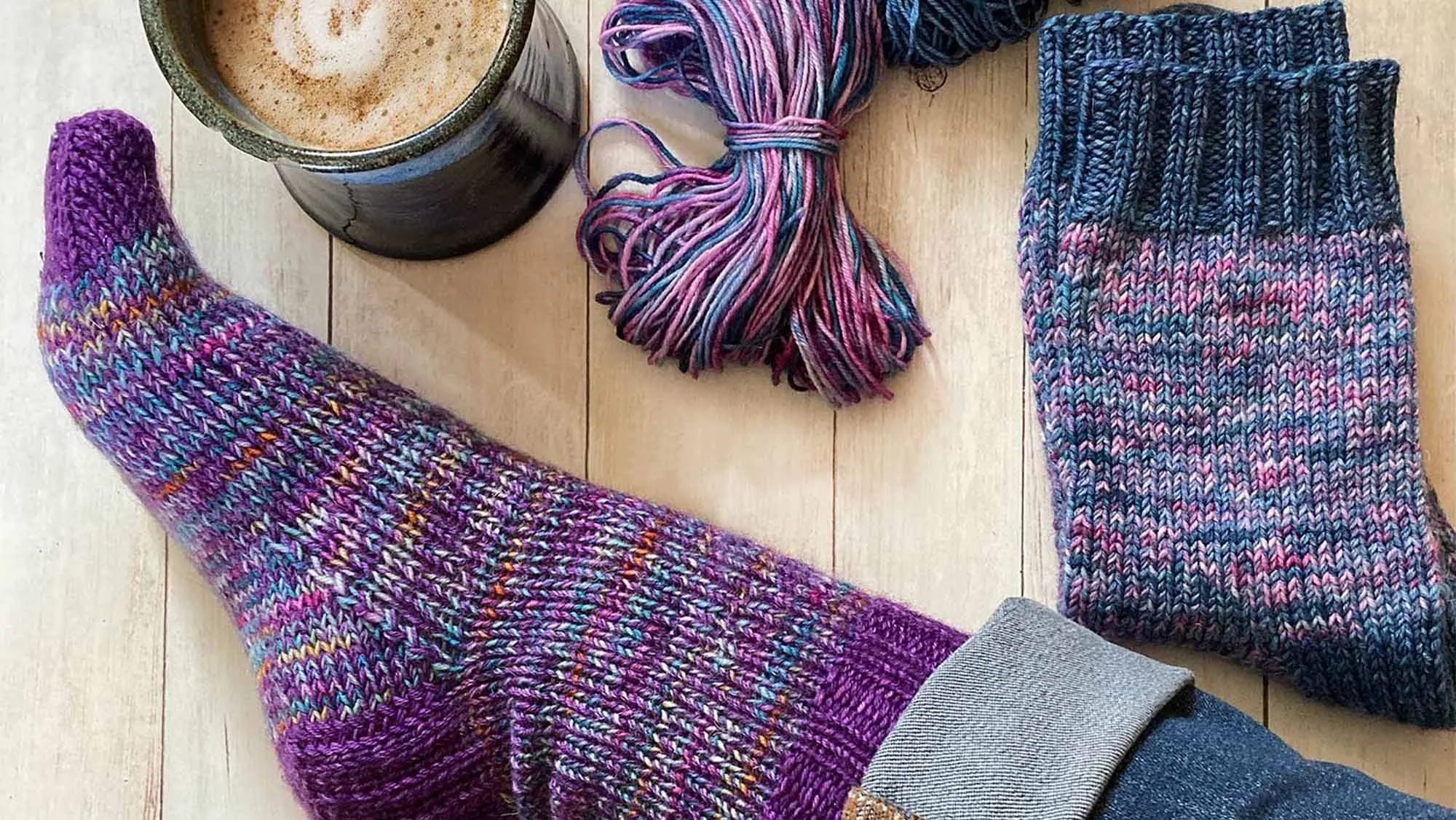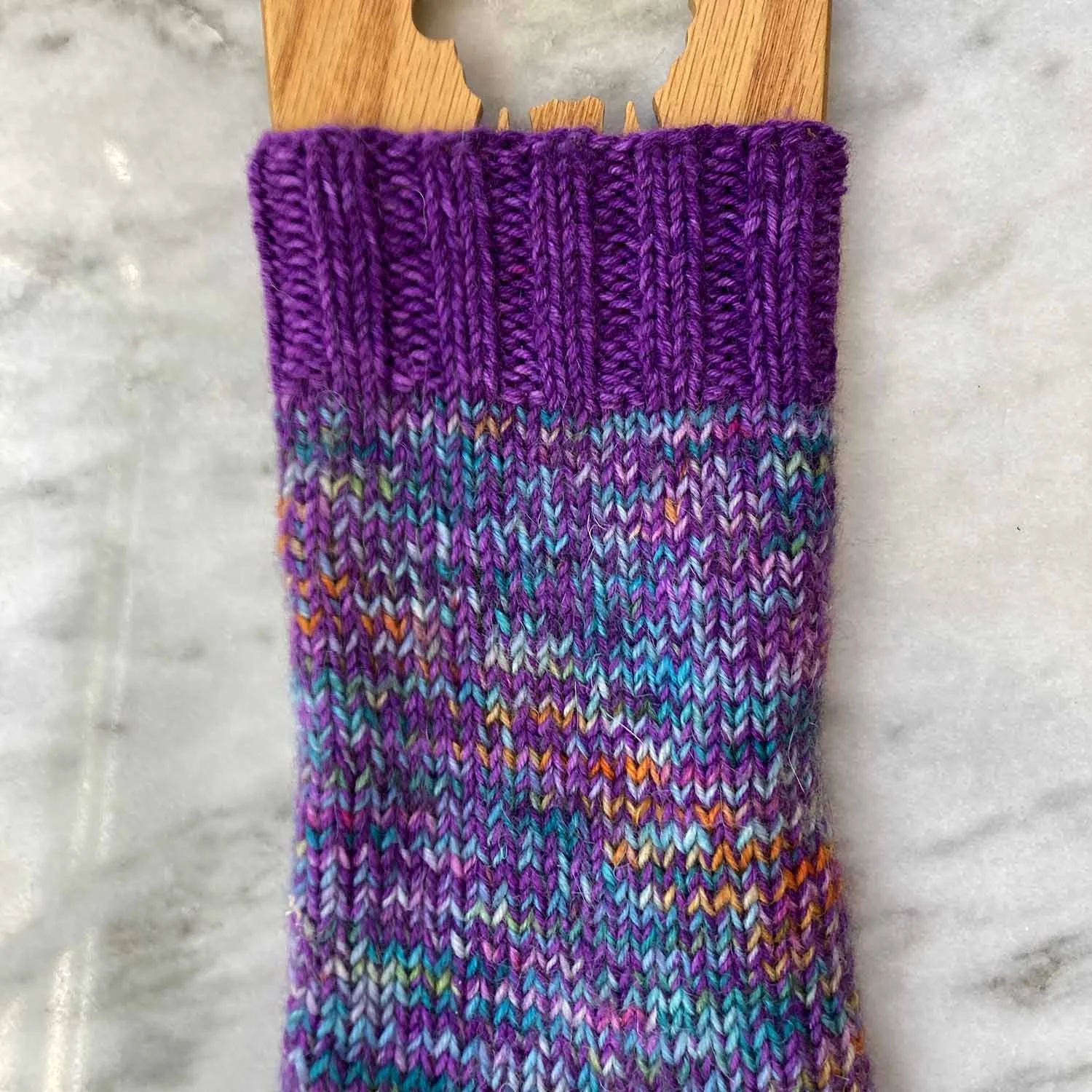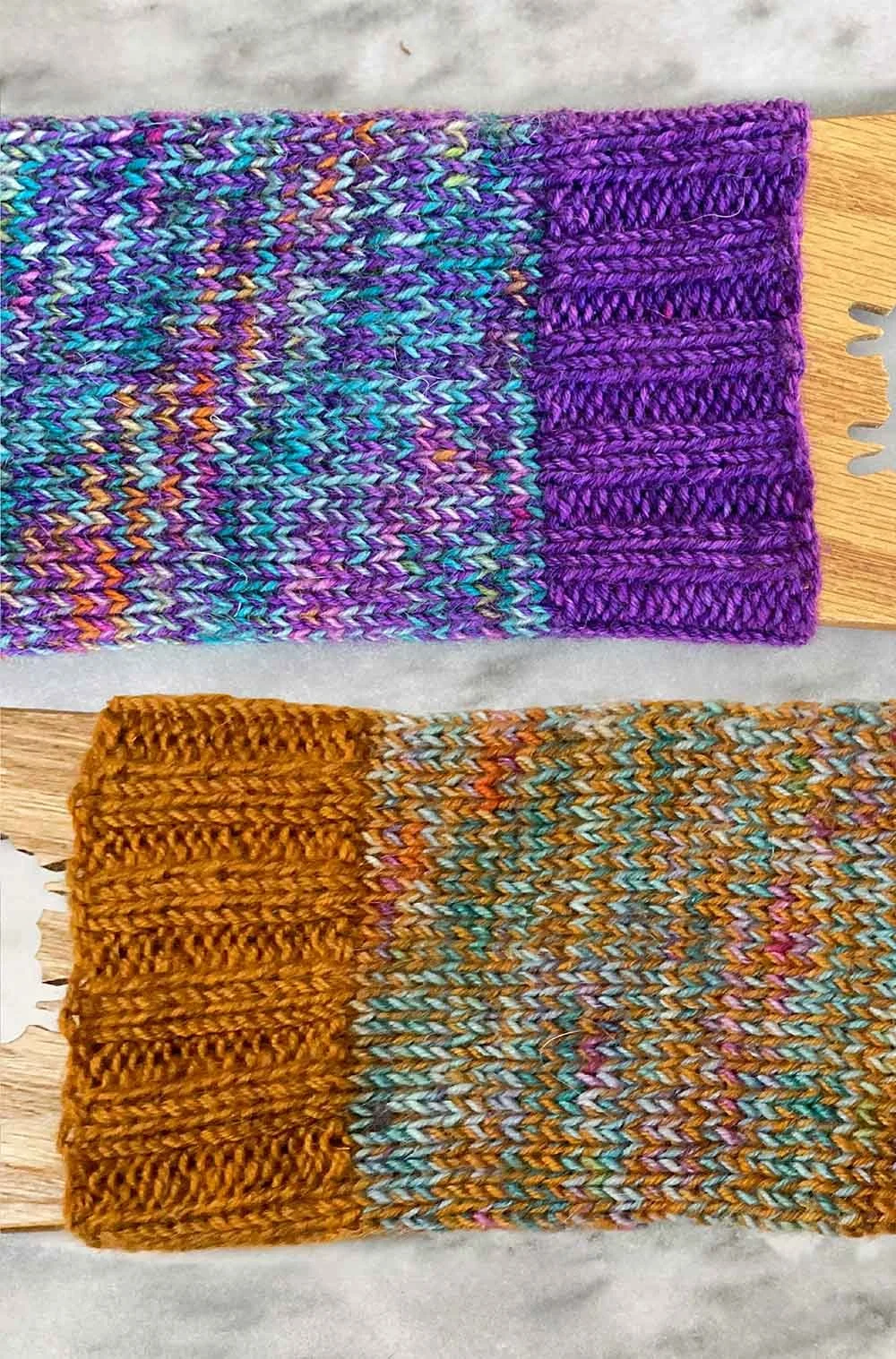Knitting Cozy, Warm Socks has Never Been so Easy: Double Exposure Sock Pattern
You know how we're always drooling over our sock yarn stashes, dreaming up the perfect project that lets you play with all those beautiful colors? I probably spend half my time just daydreaming about what to knit with all those gorgeous yarns, caught between the love for my stash and the urge to create something fun. That's where my Double Exposure Sock Pattern comes in. It’s the ideal pattern for mixing and matching your favorite yarns to knit thick, comfy socks that are as colorful as they are cozy. Not only will your feet stay warm, but you’ll also have so much fun playing with yarn combinations!
Why I Love Marled Socks
There's something so satisfying about knitting thick marled socks. With two strands of fingering weight yarn held double, you get a warm, cozy fabric that knits up quickly and looks stunning. Whether you're a sock-knitting pro or new to the craft, you’ll find this pattern fun and approachable.
Introducing the Double Exposure Sock Pattern
The Double Exposure Sock Pattern is a playful, customizable knitting project that brings your sock yarn stash to life. Designed with knitters of all skill levels in mind, the pattern includes seven sizes, from children to large adults. The best part? You can mix and match yarns to create a unique, personal design. Whether you’re knitting for yourself or a loved one, this project promises warmth, comfort, and a splash of color.
How to Knit the Double Exposure Socks
Step 1: Choose Your Yarn Pairings
Start by diving into your yarn stash and pick two yarns that make your heart sing. Don’t worry about perfect matches; this pattern shines when you mix different shades and tones. Here are a few yarn pairing ideas to get you started:
Variegated and Semi-Solid: A combination of highly contrasting yarns emphasizes the marled effect.
Self-Striping and Tonal Yarn: A subtle tonal color paired with a self-striping yarn creates stunning visual interest.
Mini-Skeins and Leftovers: Pair leftover yarns or a beautiful mini skein set with a neutral tone to make the most of your stash.
One Skein Held Double: For a single-color sock, hold one skein of yarn double. (Depending on the size, you may need a second yarn for the heels and toes.)
What a Difference a Color Change Can Make
These two socks were knit with the same variegated yarn main color, but different contrasting tonal colors. The results are vastly different.
Step 2: Cast On and Start Knitting
With your yarn chosen, it’s time to cast on! You’ll hold two strands of fingering weight yarn together, creating a beautiful marled fabric. To get the right gauge, I recommend using a US 5 (3.75mm) needle. This project knits up quickly, and watching the colors blend is like seeing a masterpiece unfold on your needles!
Step 3: Wear and enjoy your new cozy socks.
I think you are going to love these thick winter socks. One of my favorite yarns to use for these socks is Harley Fingering from Marianated Yarns. This sock yarn had a bit of mohair in it, and the resulting socks are so soft and warm - they get me through the long Maine winters.
Double Exposure Sock Pattern
Sizes 5¼ (6, 6¾) 7¼, 8, 8¾, 9¼” / 13.5 (15, 17) 18.5, 20.5, 22, 23.5 cm finished sock circumference.
Needles Size US size 5 US/3.75mm needles for small circumference knitting in the round. Adjust needle size if necessary to obtain the correct gauge.
Gauge 24 sts and 34 rows = 4”/10 cm in Stockinette stitch knit in the round with yarn held double.
FAQs: Everything You Need to Know About the Double Exposure Sock Pattern
1. How difficult is this pattern for beginners?
No worries! The pattern is designed with clear instructions and helpful tips, making it accessible to all knitters, whether you're new to sock knitting or a seasoned pro.
2. Are there sizes for both children and adults?
Absolutely! The pattern includes seven sizes, with the smallest fitting children around 3-4 years old and the largest accommodating men’s shoe sizes 12-14. Just remember to allow for negative ease: for children, choose a sock about ½” smaller than the foot circumference, and for adults, allow for 1” of negative ease. Be sure to measure your foot circumference at the widest part of the foot, just below the toes.
3. What kind of yarn works best?
While this pattern is designed for sock yarn (fingering weight yarn in a wool/nylon blend), the beauty of the Double Exposure Sock Pattern is its versatility. Get creative and experiment with different colors and styles from your stash. It works with variegated, tonal, speckled, and even self striping yarns.
4. Does the yarn require special prep?
Wind your skeins of yarn into a center pull ball, or divide and wind into two equal weight balls. When working with two strands of the same color, work from both ends of the center pull ball, or from two separate balls.
5. Will these socks be warm enough for winter?
Definitely! These socks are thick and cozy, perfect for cold winter days. Think of them as a snug, colorful hug for your feet!








